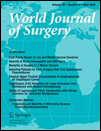Anesthesia Care Capacity at Health Facilities in 22 Low- and Middle-Income Countries
Abstract
Background
Globally, an estimated 2 billion people lack access to surgical and anesthesia care. We sought to pool results of anesthesia care capacity assessments in low- and middle-income countries (LMICs) to identify patterns of deficits and provide useful targets for advocacy and intervention.
Methods
A systematic review of PubMed, Cochrane Database of Systematic Reviews, and Google Scholar identified reports that documented anesthesia care capacity from LMICs. When multiple assessments from one country were identified, only the study with the most facilities assessed was included. Patterns of availability or deficit were described.
Results
We identified 22 LMICs (15 low- and 8 middle-income countries) with anesthesia care capacity assessments (614 facilities assessed). Anesthesia care resources were often unavailable, including relatively low-cost ones (e.g., oxygen and airway supplies). Capacity varied markedly between and within countries, regardless of the national income. The availability of fundamental resources for safe anesthesia, such as airway supplies and functional pulse oximeters, was often not reported (72 and 36 % of hospitals assessed, respectively). Anesthesia machines and the capability to perform general anesthesia were unavailable in 43 % (132/307 hospitals) and 56 % (202/361) of hospitals, respectively.
Conclusion
We identified a pattern of critical deficiencies in anesthesia care capacity in LMICs, including some low-cost, high-value added resources. The global health community should advocate for improvements in anesthesia care capacity and the potential benefits of doing so to health system planners. In addition, better quality data on anesthesia care capacity can improve advocacy, as well as the monitoring and evaluation of changes over time and the impact of capacity improvement interventions.




